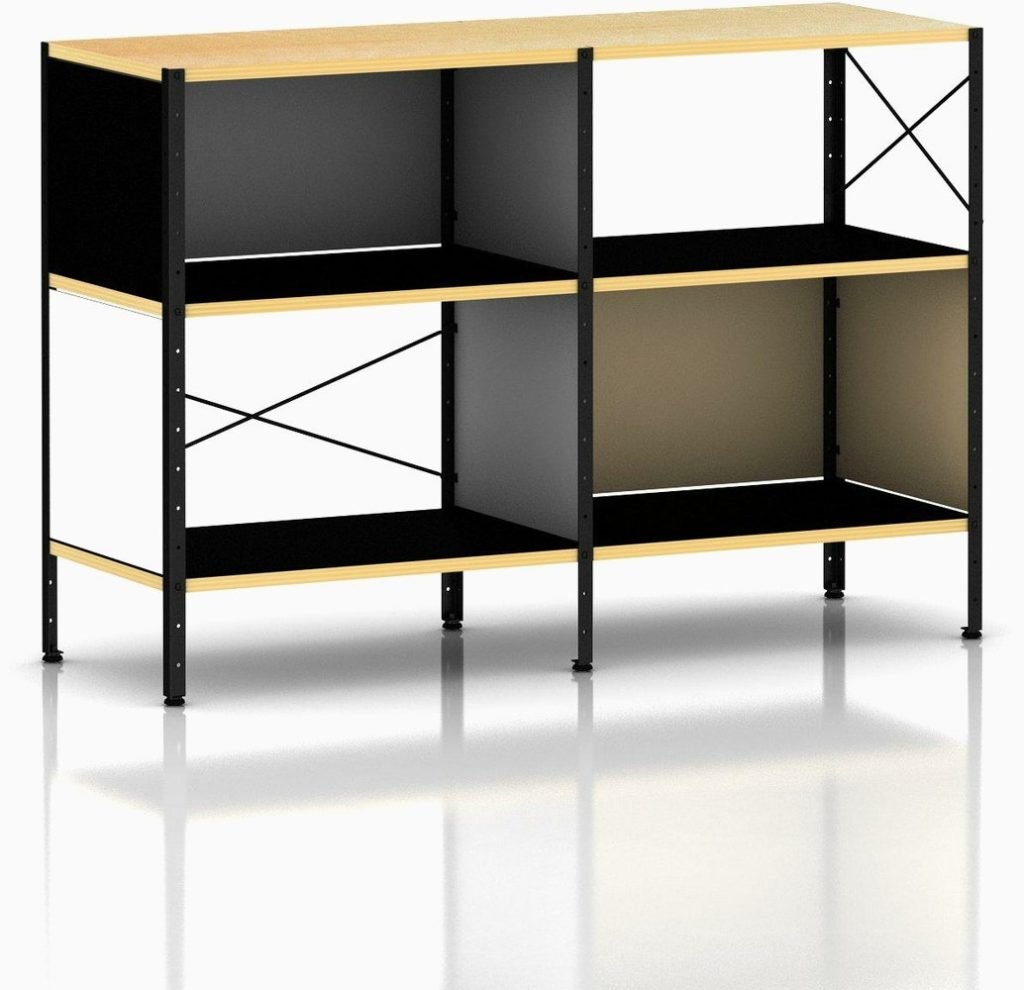Eames Storage Units
The Eames Storage Units (ESU) have been designed in such a way as to permit exceptional economies in manufacturing. The combination of standard elements can be made arranged into several different types of units to serve an infinite number of uses—in the living room, the dining room, the bedroom, or as a room divider.
Made of perforated steel extrusions with diagonal bracing, they could be configured as low credenzas or high bookshelves. The storage units facilitate open storage, closed storage, and drawers. In addition, buyers could customize the interior arrangement, selecting plywood drawers or doors and perforated metal or enameled Masonite filler panels.
There are two color choices: “Colorful” units with primary colors of red, blue, and yellow, and “Neutral” with beige and grey colors. The wood elements of the storage units and desks are either walnut or birch. The two standard units are forty-eight inches by twenty-four inches wide; both are sixteen inches deep and thirty-two inches high.
There had never been like it in the consumer market. Its closest parallel is industrial shelving, but this was years before the words “High Tech” were bandied about by interior decorators.
True to the Eames philosophy, all of the materials were presented honestly: the extruded steel structure was unadorned and unconcealed. There were optional metal parts: cross wires and sheets of steel drilled with holes. A type of thin plywood door that Charles and Ray had first developed in 1946 for their original case goods was available. These plywood sliding doors were molded with circular indentations, which gave them a cared-for appearance and increased the wood’s durability and resistance to warping.
Of all of the Eames designs, they provide the most obvious example of the benefits of standardized parts. The same parts could be used to make several different kinds of storage units, and the cost savings for the manufacture meant lower prices to the consumer. The storage units and the desks were sold to consumers fully assembled, in configurations ordained by Charles and Ray Eames.
The ESU is still produced by Herman Miller and Vitra.
Explore Similar Works
History
Related Products
Browse a curated selection of Eames Office products we think you’ll love








